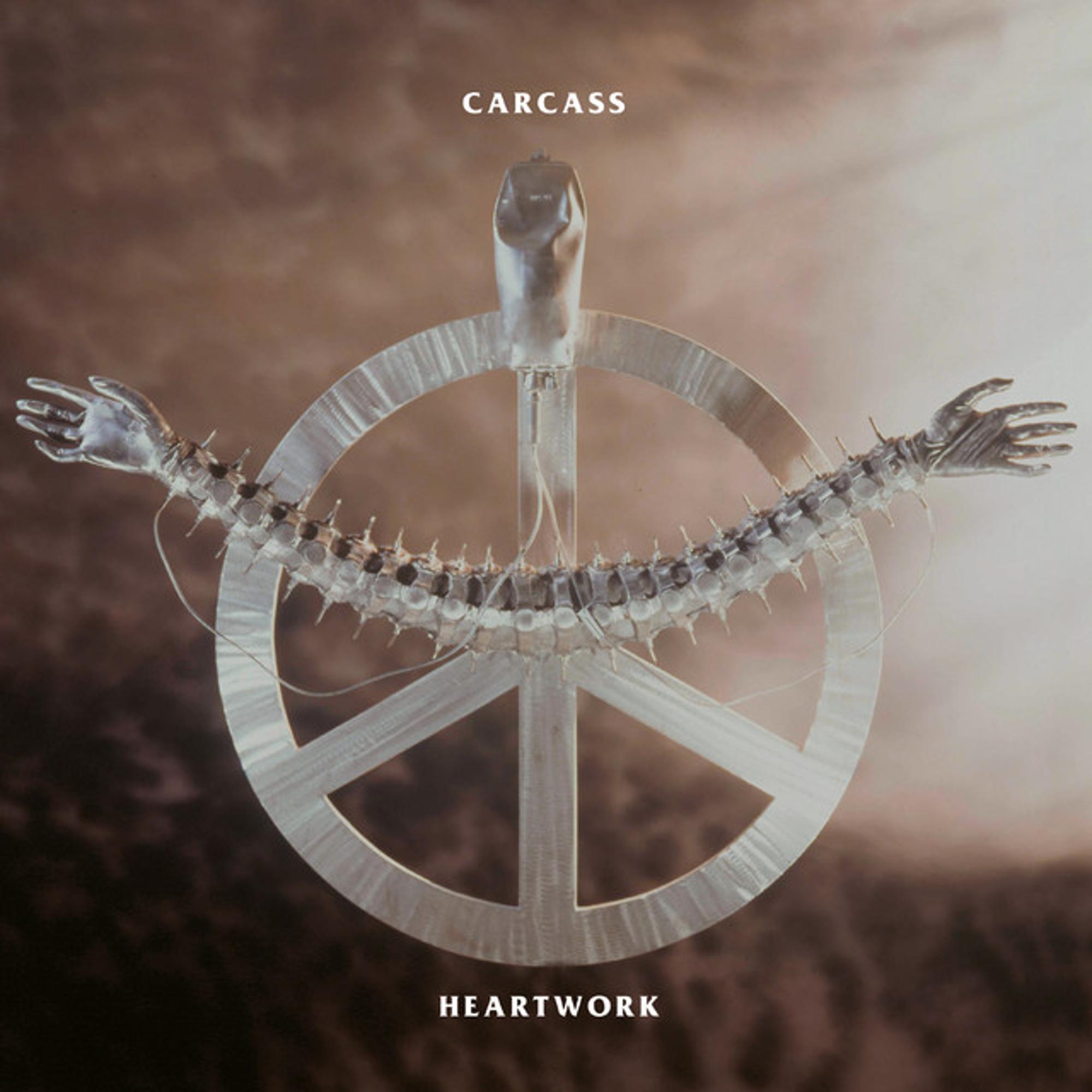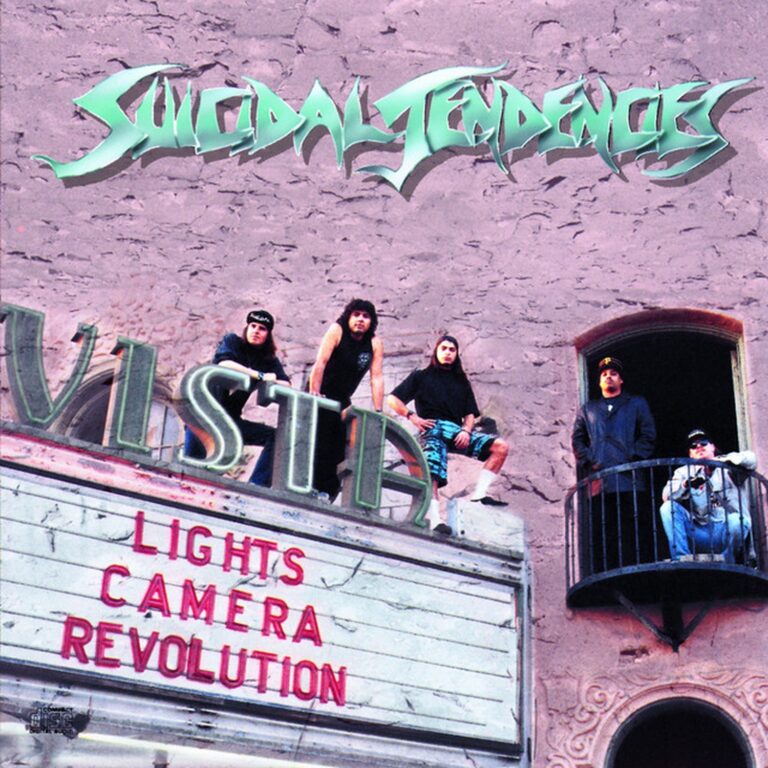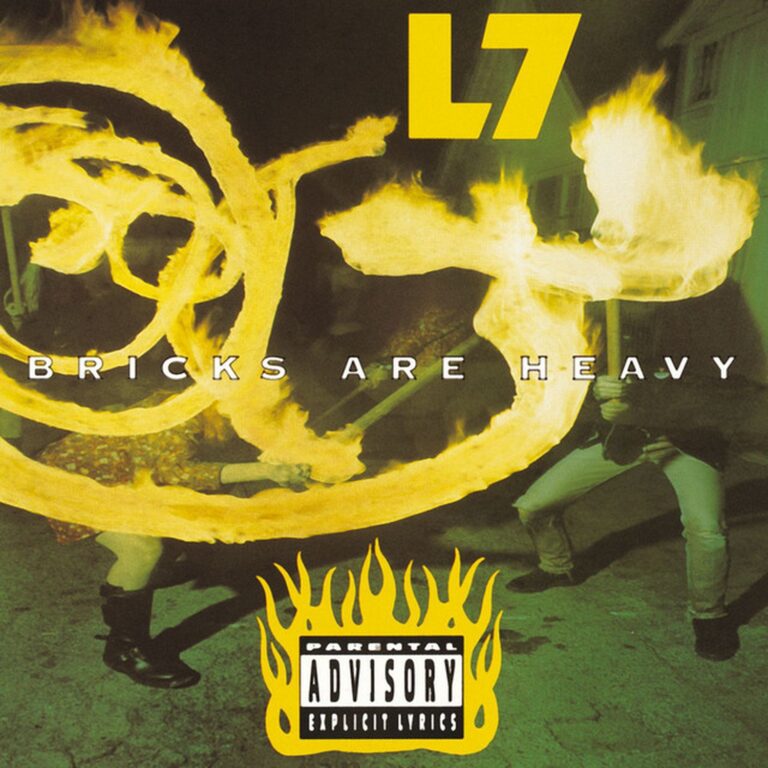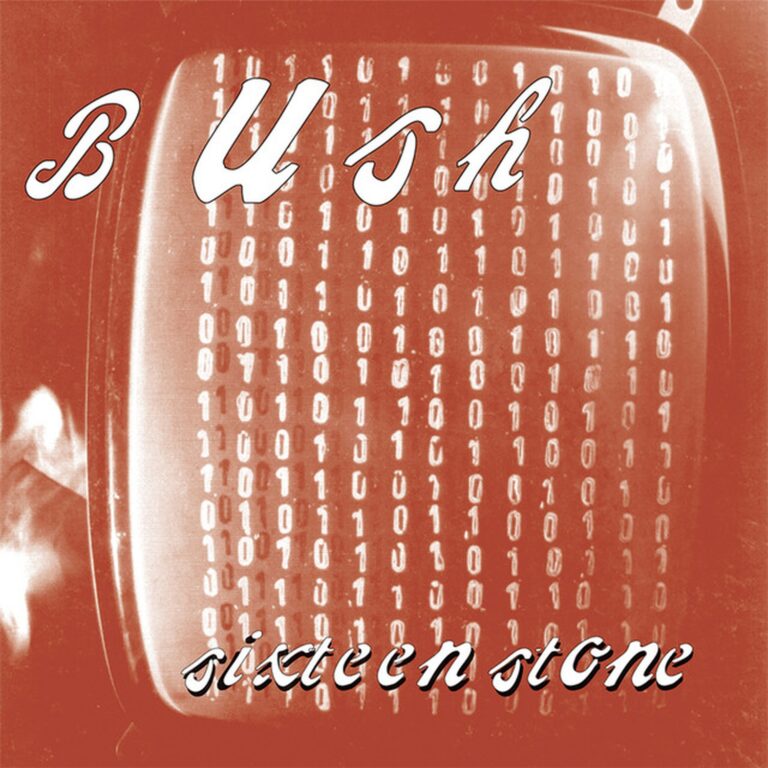
Carcass – Heartwork: The Album That Redefined Extreme Metal
Some albums don’t just change a band’s direction—they change the very sound of a genre. When Carcass released Heartwork in 1993, they did exactly that. After years of gore-drenched grindcore and boundary-pushing death metal, the Liverpool band delivered a record that would go on to shape melodic death metal and influence generations of musicians. But the story of Heartwork is much more than just riffs and solos. It’s about a group of musicians determined to break new ground, a producer with an uncompromising vision, and an album that remains a touchstone for heavy music three decades later.
In this article, I’ll guide you through the genesis, recording, and legacy of Heartwork. You’ll learn about the creative battles in the studio, the iconic artwork by H.R. Giger, and how the album performed in the charts. We’ll also look at every track, dig into the lyrics, and explore the impact Heartwork has had on metal and beyond. If you want to know why this album is still discussed and dissected today, you’re in the right place.
| Attribute | Details |
|---|---|
| Release date | 18 October 1993 (Europe), 11 January 1994 (US) |
| Album title | Heartwork |
| Genre | Melodic death metal, technical death metal |
| Total runtime | 41:55 |
| Number of tracks | 10 (standard edition) |
| Record label | Earache Records (Europe), Columbia Records (US) |
| Recording studio | Parr Street Studios, Liverpool, UK |
| Producer(s) | Colin Richardson (Keith Andrews Engineer) |
From its release, Heartwork stood out for its technical brilliance and bold sense of melody. It’s not just me saying this. As Jeff Walker, the band’s bassist and vocalist, told Metal Hammer: “We wanted to make something more concise, more direct, but still complex. I think we achieved that.” Meanwhile, producer Colin Richardson reflected, “We spent days chasing the perfect guitar sound. It was a battle, but the end result speaks for itself.” The album’s reputation has only grown since, with Rolling Stone placing it at number 51 in their list of the 100 Greatest Metal Albums of All Time, and Decibel magazine calling it “the defining statement of melodic death metal.”
The Genesis of “Heartwork”
By 1993, Carcass had already carved out a reputation as pioneers of grindcore and death metal. Their early albums, such as Reek of Putrefaction and Symphonies of Sickness, shocked listeners with their gore-drenched lyrics and raw sound. But change was brewing. With 1991’s Necroticism – Descanting the Insalubrious, the band started weaving in melody and more complex arrangements. This evolution set the stage for Heartwork.
In the run-up to Heartwork, Carcass were touring hard, sharing stages with bands like Napalm Death, Entombed, and Death. Songwriting for the new album began during the Necroticism tour. Jeff Walker later recalled, “We were tired of long, meandering songs. We wanted something punchier, but with all the technicality.” Bill Steer, guitarist and founding member, remained the driving force behind the riffs, with Michael Amott now firmly established as the second guitarist, adding his own melodic flair.
Creativity was a team effort. Jeff Walker wrote all the lyrics, while Bill Steer and Michael Amott handled most of the music. Ken Owen’s drumming, sometimes described as “curiously wobbly” (as noted in Wikipedia), gave the songs a restless energy. The group entered Parr Street Studios in Liverpool with producer Colin Richardson, determined to make their most focused record yet.
Here’s a look at who did what in the studio:
| Band Member | Instrument/Role |
|---|---|
| Jeff Walker | Vocals, bass, lyricist |
| Bill Steer | Guitar (all rhythm guitars), main songwriter |
| Michael Amott | Guitar, lead and harmony parts |
| Ken Owen | Drums, percussion |
Financing was a challenge. Earache Records provided the budget, but studio costs mounted as the band chased the perfect sound. At £100 per day, time was money. According to Malcolm Dome’s Metal Hammer feature, Carcass even considered firing Colin Richardson during pre-production but ultimately stuck with him. The pressure paid off in the end.
The album’s title, Heartwork, is a clever play on words. It hints at the technical, almost surgical precision of the music, but also the emotional investment behind it. The cover art, created by Swiss surrealist H.R. Giger, is based on his sculpture “Life Support 1993.” The image—a biomechanical heart—became as iconic as the music itself. The band were so taken with Giger’s work that the video for the title track features a real-life interpretation of the sculpture.
Recording Process
Recording Heartwork was anything but straightforward. The sessions ran from 18 May to 21 June 1993 at Parr Street Studios in Liverpool. The band had already demoed the entire album in Studio Three—the smallest room in the building. But when it came to recording for real, they started in Studio Two, which had better drum acoustics but proved a nightmare for guitars.
Parr studios has a great history of recording huge records:
| Artist | Album | Year | Source/Link |
| Carcass | Heartwork | 1993 | Wikipedia |
| Coldplay | Parachutes | 2000 | Wikipedia |
| Coldplay | A Rush of Blood to the Head | 2002 | Wikipedia |
| Elbow | Asleep in the Back | 2001 | Wikipedia |
| Stereophonics | Performance and Cocktails | 1999 | Wikipedia |
| Black Sabbath | Forbidden | 1995 | Wikipedia |
| The Coral | The Coral | 2002 | Wikipedia |
| Doves | Lost Souls | 2000 | Wikipedia |
| Paolo Nutini | Sunny Side Up | 2009 | Wikipedia |
| Echo & The Bunnymen | Siberia | 2005 | Wikipedia |
| Take That | Progress | 2010 | Wikipedia |
According to engineer Keith Andrews, the team spent five days trying different amps, cabs, and mic placements to capture Bill Steer’s guitar tone. They tried Soldano, Peavey 5150, Mesa Dual-Rectifier, and several Marshalls, but the sound was always too “scratchy.” In frustration, they moved the setup to Studio Three. Suddenly, everything clicked. Bill and Michael double-tracked their rhythm parts, panning them left and right, and used a combination of Peavey 5150, Marshall 30th Anniversary, and a mini Marshall stack for added bite. A Marshall Guv’nor pedal provided extra overdrive.
Drums were recorded with care. Ken Owen’s kit was placed in the main room for maximum ambience, with microphones such as the AKG D12, Beyer M380, Shure SM57, Neumann C414, and Sennheiser MD421s capturing every detail. Bruel & Kjaer 4006 omnis served as overheads. The team debated using triggered kick drums but preferred the natural sound, only blending in samples during mixing for clarity. Bass was tracked both direct and through a cab, isolated in a stone “dungeon” built from leftover Yorkshire stone.
Vocals were all handled by Jeff Walker, using a Neumann M269 microphone in a dead room. Producer Colin Richardson and engineer Keith Andrews pushed for perfection, sometimes to the point of exhaustion. Andrews later described it as “one of the most intense periods of my life.” The final mixes were done on a 64-channel SSL console in Studio One, with custom EQ and effects. The results, as you can hear, are both brutal and clear.
Here’s a summary of the main studio gear used, based on accounts from Keith Andrews and others:
| Hardware/Instrument | Details/Notes |
|---|---|
| Mixing desk | SSL 64-channel (Studio 1), Neve VR60 (Studio 2), Allen & Heath Saber (Studio 3) |
| Tape machines | Studer A827 (24-track), Studer A80RC (½” mixdown), 1” 16/24-track in Studio 3 |
| Drum mics | AKG D12, Beyer M380 (kick); Shure SM57, Neumann C414 (snare); Sennheiser MD421 (toms); Bruel & Kjaer 4006 (overheads) |
| Guitar amps/cabs | Peavey 5150, Marshall 30th Anniversary, Marshall SL-X 100W, Marshall Valvestate ministack, Soldano, Mesa Dual-Rectifier; custom “Frankencabinet” (two Marshall 4x12s back-to-back, one gutted for resonance) |
| Pedals | Marshall Guv’nor (overdrive boost) |
| Bass | Direct input and miked cab, isolated in stone-walled room |
| Vocals | Neumann M269 microphone |
| Outboard effects | GML EQ, Akai S1100 sampler (kick triggers), custom tape phasing (Studer A810s) |
Colin Richardson’s production style shaped Heartwork and many other classics. Here’s a look at some of the albums he’s produced or engineered:
| Producer | Artist | Album | Year |
|---|---|---|---|
| Colin Richardson | Napalm Death | Harmony Corruption | 1990 |
| Colin Richardson | Bolt Thrower | The IVth Crusade | 1992 |
| Colin Richardson | Cannibal Corpse | The Bleeding | 1994 |
| Colin Richardson | Machine Head | Burn My Eyes | 1994 |
| Colin Richardson | Fear Factory | Demanufacture | 1995 |
With the album finally complete, Carcass were ready to unleash Heartwork on the world. What happened next was unprecedented for the band.
Commercial Performance and Reception
When Heartwork arrived in October 1993, it marked a new era for Carcass. For the first time, they charted in the UK Top 100, peaking at number 54. In the US, the album was released through Columbia Records in January 1994, their only major label outing. While it didn’t break into the Billboard 200, Heartwork made a significant dent in the underground and sold at least 81,000 units according to Wikipedia.
Let’s put Heartwork in context by looking at Carcass’s studio albums, their producers, and sales where available:
| Album | Year | Producer |
|---|---|---|
| Reek of Putrefaction | 1988 | Carcass, Paul Talbot |
| Symphonies of Sickness | 1989 | Colin Richardson |
| Necroticism – Descanting the Insalubrious | 1991 | Colin Richardson |
| Heartwork | 1993 | Colin Richardson |
| Swansong | 1996 | Colin Richardson |
| Surgical Steel | 2013 | Colin Richardson, Andy Sneap (mixing) |
| Torn Arteries | 2021 | Carcass, Tom Draper |
Heartwork received no mainstream awards, but its impact was immediate in the metal community. It was later inducted into Decibel magazine’s Hall of Fame (May 2013, issue 100) and ranked in Rolling Stone’s 100 Greatest Metal Albums. Metal Hammer called it “the defining statement of melodic death metal.” The song “Carnal Forge” even inspired a band name, and Chuck Schuldiner of Death praised Bill Steer’s guitar work as “magic rarely heard anymore.”
Other notable albums released in 1993 by similar artists include:
- In Utero by Nirvana
- Siamese Dream by The Smashing Pumpkins
- Chaos A.D. by Sepultura
- Wolverine Blues by Entombed
- Soul Destruction by The Almighty
- Bloody Kisses by Type O Negative
- Pork Soda by Primus
- Gentlemen by The Afghan Whigs
- Vs. by Pearl Jam
In 1993, heavy music was in flux. Grunge and alternative rock were rising, but bands like Carcass, Sepultura, and Entombed were pushing metal’s boundaries. Heartwork stood out for its precision and melody, inspiring a new wave of melodic death metal bands across Europe and the US.
Track Analysis
Heartwork spawned several singles, including the title track “Heartwork,” which was released in 1994 alongside non-album tracks “This Is Your Life” and “Rot ‘n’ Roll.” All lyrics were written by Jeff Walker, with music credits split between Bill Steer and Michael Amott. The album’s songwriting is concise yet packed with technical detail, making each track distinct.
Here’s a breakdown of every track, including length and writing credits:
| Track Name | Length | Writing Credit |
|---|---|---|
| Buried Dreams | 3:58 | Bill Steer |
| Carnal Forge | 3:54 | Bill Steer, Michael Amott |
| No Love Lost | 3:22 | Bill Steer |
| Heartwork* | 4:33 | Bill Steer, Michael Amott |
| Embodiment | 5:36 | Michael Amott, Bill Steer |
| This Mortal Coil | 3:49 | Bill Steer, Michael Amott |
| Arbeit Macht Fleisch | 4:21 | Bill Steer |
| Blind Bleeding the Blind | 4:57 | Bill Steer |
| Doctrinal Expletives | 3:39 | Bill Steer, Michael Amott |
| Death Certificate | 3:38 | Michael Amott, Bill Steer |
Note: The song “Heartwork” was released as a single, but there’s no chart data available for its performance. The single included two non-album tracks: “This Is Your Life” and “Rot ‘n’ Roll.”
Song Meaning and Lyrics
The lyrics on Heartwork marked a shift for Carcass. While previous albums leaned heavily on medical and gore imagery, here the themes became more abstract and philosophical. Jeff Walker wrote all the lyrics, often using metaphor and wordplay to explore ideas about mortality, ethics, and the human condition. For example, “Heartwork” uses surgical language as a metaphor for emotional transformation: “This is your life / This is your heartwork.”
Unlike later albums such as Torn Arteries, where the band intentionally scrambled lyrics in the liner notes (as described on The Masquerade website), Heartwork presents its lyrics in full. The writing credits are consistent throughout: Jeff Walker (lyrics), Bill Steer and Michael Amott (music). There were no guest lyricists or outside contributors.
Collaboration between Walker, Steer, and Amott was key. Amott’s melodic guitar lines gave the music a sense of grandeur, while Steer’s riffs anchored the sound. The result was a set of songs that balanced brutality and melody—something that would influence countless bands in the years to come.
Touring and Promotion of Heartwork
Promotion for Heartwork was extensive. Carcass filmed a music video for the title track, which featured a live-action recreation of the H.R. Giger sculpture. The band played a string of high-profile shows in Europe and North America. In April 1993, before the album’s release, they toured Europe with Death and Cannibal Corpse, performing the entire album live—a bold move that showed their confidence in the new material.
The official “Heartwork” tour began in October 1993, covering the US, UK, Australia, New Zealand, and Japan. Notable performances included a show in Wellington, New Zealand, on 18 November 1993 (venue presumed Stax Nightclub), with the lineup of Bill Steer, Jeff Walker, Ken Owen, and Mike Hickey (standing in for Michael Amott, who left after recording). The tour continued with dates in Australia and Japan, before returning to the UK for a co-headline run with Body Count and Headswim in December 1993.
Carcass shared stages with bands such as Napalm Death, Death, Cannibal Corpse, and Body Count during this period. The tour ran for over 40 shows, taking in Europe, North America, and Australasia, with every set featuring a heavy dose of Heartwork material.
Influences and Legacy
Carcass drew on a wide range of influences for Heartwork. The most obvious are the New Wave of British Heavy Metal bands like Iron Maiden and Judas Priest, whose melodic twin-guitar leads are echoed in the album’s harmonies. There are also nods to Megadeth and Slayer in the technical riffing and tight song structures.
At the same time, Heartwork influenced a whole generation of bands. The melodic death metal scene in Sweden, including Arch Enemy (founded by Michael Amott), The Black Dahlia Murder, and Arsis, all cite the album as a key inspiration. Even outside death metal, bands like Bring Me The Horizon have acknowledged its impact.
Here’s a summary of influences and those influenced by Heartwork:
| Influences on “Heartwork” | Artists Influenced by “Heartwork” |
|---|---|
| Iron Maiden | Arch Enemy |
| Judas Priest | The Black Dahlia Murder |
| Megadeth | Arsis |
| Slayer | Angela Gossow |
| Death | Carnal Forge |
1993 was a year of huge cultural change. The world saw the launch of the European Union, the signing of the Oslo Accords, and the release of Jurassic Park. In music, grunge was at its peak, but metal was branching out, with Heartwork leading the charge into new melodic territory.
Five Things about Heartwork
Let’s dig into five fascinating facts about Heartwork—all verified and sourced:
| Fact | Details |
|---|---|
| H.R. Giger created the album cover | The cover art is based on Giger’s “Life Support 1993” sculpture. The band commissioned him specifically for this album. |
| The band nearly fired their producer | Carcass considered replacing Colin Richardson during pre-production but decided to keep him after heated discussions. |
| All rhythm guitars were played by Bill Steer | Although Michael Amott contributed leads and harmonies, Steer handled every rhythm guitar part on the album. |
| Michael Amott left after recording | Amott departed to form Spiritual Beggars, making Heartwork his last Carcass album until the 2007 reunion. |
| The album influenced a band’s name | Swedish melodic death metal band Carnal Forge took their name from the song “Carnal Forge.” |
Media and Television Usage
I searched all available data and was unable to find any uses of songs from Heartwork in films, television, or games. While later Carcass songs have appeared in media, this album’s tracks remain largely untouched by Hollywood or the gaming industry.
Critical Reviews and Retrospectives
Critical reception for Heartwork has only grown stronger with time. Early reviews praised its technical skill and melody, but some fans accused the band of “selling out” by moving away from their grindcore roots. Over the years, however, the album has become a touchstone for melodic death metal and is widely regarded as a classic.
Here’s a sample of major reviews and retrospectives:
| Publication | Score | Notable Quote | Link |
|---|---|---|---|
| AllMusic | Positive | “Relentless, but with a strong melodic sense… one of the mightiest opening tracks in metal.” | AllMusic |
| Collector’s Guide to Heavy Metal | 8/10 | “Possibly the best British extreme metal album of the 1990s.” | Louder Sound |
| Entertainment Weekly | C+ | “Cold and massive… catchy and a continuous onslaught of memorable hooks.” | Entertainment Weekly |
| Metal Rules | 5/5 | “A landmark album in melodic death metal.” | Metal Rules |
| Rock Hard | 9.0/10 | “A continuous onslaught of memorable hooks.” | Rock Hard |
| Rolling Stone | N/A | “Ranked 51st in the 100 Greatest Metal Albums of All Time.” | Rolling Stone |
After Heartwork
After the release of Heartwork, Carcass experienced significant changes. Michael Amott left to form Spiritual Beggars and later Arch Enemy. The band signed directly with Columbia Records for their next album, Swansong, but label troubles and internal disagreements led to their breakup in 1996. Jeff Walker, Bill Steer, and Ken Owen moved on to other projects, with Owen suffering a brain haemorrhage that prevented him from drumming again.
In 2007, Carcass reformed (without Ken Owen on drums) and have since released new material, including Surgical Steel (2013) and Torn Arteries (2021). As of July 2025, the band continues to tour and record, with Bill Steer and Jeff Walker remaining at the core.
Remasters and Reissues
There is no detailed information available about specific remasters or reissues of Heartwork beyond the 2008 Dualdisc edition released by Earache Records, which included a bonus DVD and a disc of demo versions. The reissue featured a 12-panel digipak, full lyrics, and artwork. Later editions separated the DVD onto its own disc, totalling three discs.
| Year | Edition / Format | Label | Highlights | Source/Buy Link |
| 2008 | CD Digipak + DVD (DualDisc Reissue) | Earache | Includes documentary & demo tracks | Wikipedia |
| 2013 | CD / Vinyl Reissue (FDR Remaster) | Earache | Full Dynamic Range remaster, improved clarity | Iron Man Records (Bandcamp) |
| 2016 | FDR Vinyl Edition | Earache | Remastered from original tapes, FDR vinyl | Steve Hoffman Forum |
| 2021 | Ultimate Edition 2xLP (Remastered) | Earache | Original album + bonus LP of demos | Discogs |
| 2024 | Limited Edition White/Green Vinyl | RUDE Records | Coloured vinyl, remastered audio | iMusic |
| N/A | Special Edition (Digital + Bonus Tracks) | Earache | Digital album with 10 bonus demo tracks | Bandcamp |
Conclusion
Heartwork remains a landmark in heavy music. Its blend of technical skill, melody, and uncompromising vision continues to inspire bands worldwide. Carcass’s willingness to evolve—without losing their identity—set a standard that few have matched. Even today, the album’s influence can be heard in metal’s most innovative acts. If you want to understand where melodic death metal began, this is the place to start.
Further Reading
- The Making of Necroticism – Descanting the Insalubrious, Carcass’s Death Metal Classic (our blog article)
- Blood Dynasty by Arch Enemy – album review (our blog article)
- Wikipedia page for Heartwork
- Earache Records official website
- All Carcass articles and reviews on Riffology
- Official Carcass website
Let us know in the comments what your thoughts are on Heartwork by Carcass. Did we miss anything? Share your experiences and join the conversation!



